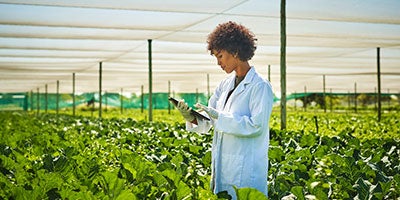From insect pheromones used to control pests through mating disruption to microorganisms that help crops stave off the impacts of climate change and soil degradation, crop biologicals — biological products that can be used to stimulate and enhance both the nutrition and the fertility of crops as well as protect them from fungus and insect pests — have been around for years, some for decades.
But more recently, as demand for more naturally cultivated food products has continued to pick up speed, so has the pace of development for a whole new generation of crop biologicals — and, along with it, farmers’ interest in adopting them. In the meantime, as the EU considers banning a number of commonly used pesticides, both it and the U.S. have recently moved to streamline the approval of new biologicals to replace them. The net result of these developments is that growth in crop biologicals is now forecast to outpace that of conventional agrichemicals, with a compound annual growth rate of 14% through 2029.
In other words, crop biologicals are just getting started. And given how significant the role is that they will play in sustainable agriculture going forward, they present a tremendous opportunity today.
Why the time to consider crop biologicals is now
In order to better understand the current trends in sustainable agriculture, including both the drivers of and the barriers to the adoption of sustainable practices and technologies, L.E.K. Consulting surveyed more than 450 U.S. growers in the U.S. and Brazil and engaged in executive roundtable discussions with a range of crop input manufacturers, retailers and related industry experts. Crop biologicals was just one of the five key dimensions of sustainable cultivation that we focused on in our in-depth study, and it is one that still has substantial room for growth.
The vast majority of crop biologicals are either biopesticides, biofertilizers or biostimulants. Biopesticides, which are used to protect crops, are pesticides derived from natural materials such as animals, plants, bacteria and certain minerals, whereas biofertilizers and biostimulants are used to enhance crop fertility. Biofertilizers are microorganisms that promote the growth of plants by directly increasing the supply or availability of primary nutrients to the host plant when applied to seeds, plant surfaces or soil. Biostimulants are substances or microorganisms that enhance nutrition efficiency or improve tolerance to abiotic stress and increase crops’ yield and quantity.
As our survey and related roundtable discussions revealed, a variety of factors make now the time to consider crop biologicals:
A sustainable intensification in global food cultivation is needed — Biologicals complement and help reduce the required use of synthetic crop chemicals and some fertilizers, which in turn improves soil health and productivity. And while biologicals are not directly substitutable for each other in field applications, the production of biologicals has a lower overall carbon footprint.
Biotech has evolved to support the widespread use of crop biologicals — From gene editing to precision fermentation, advances in biotechnology have rendered crop biologicals accessible and available to even the smallest grower.
For growers, biologicals make economic sense — Growers want to protect the health of their soil, increase their productivity and reduce their input costs, and effective biologicals enable them to do all three.
Biologicals offer growth opportunities for both traditional and newly emerging crop input providers — Compared to fertilizers and crop chemicals, the biologicals market is still relatively small. Biopesticides now represent just 8% of the roughly $65 billion total crop protection market. And biostimulants and biofertilizers together comprise roughly 2%, or $2 billion and $3 billion respectively, of the more than $200 billion global fertilizer market; traditional chemical fertilizers make up the rest. But biologicals have already seen considerable investment, which continues to accelerate (strain development, scaling production capacity, etc.).
The adoption outlook for biologicals
Growers’ adoption rates of biologicals are about the same for crop protection and crop nutrition, with some 18%-20% of growers either using biologicals at scale or trialing them with the intention to use at scale, according to our survey findings. That said, those findings also suggest that many growers have trialed biologicals and opted not to roll them out at scale; some 30% of the growers we surveyed abandoned their use of biologicals after trying them. Meanwhile, another 29% have yet to trial biologicals at all, so an untapped market opportunity remains (see Figure 1).








